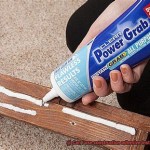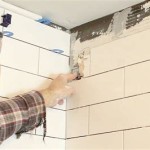Can You Paint Tile Floors? A Comprehensive Guide
Painting tile floors is a renovation option often considered when replacing the existing flooring is financially prohibitive or involves extensive labor. While not as durable as a professionally installed new floor, painting can offer a cost-effective aesthetic update, transforming outdated or worn-looking tile into a more modern and visually appealing surface. However, the longevity and appearance of a painted tile floor depend heavily on proper preparation, the right type of paint, and diligent application techniques.
This article provides a detailed explanation of the process involved in painting tile floors. It covers the necessary preparation steps, the selection of appropriate materials, the recommended application methods, and maintenance considerations. It also addresses the potential drawbacks and limitations of this approach, allowing homeowners to make an informed decision about whether painting their tile floors is a suitable solution for their specific needs.
Painting tile floors is typically more appropriate for areas with low to medium foot traffic. Bathrooms, laundry rooms, or lightly used hallways are generally better candidates than high-traffic areas like kitchens or entryways. The durability of the paint is directly impacted by the amount of wear and tear it endures. Therefore, careful consideration should be given to the intended use of the space before deciding to proceed with this project.
Key Point 1: Preparing the Tile Surface
Thorough preparation is the most critical factor influencing the success of a tile floor painting project. Failure to properly prepare the surface will inevitably lead to premature chipping, peeling, and an overall unsatisfactory finish. The goal of preparation is to create a clean, slightly abraded surface that will allow the paint to bond effectively with the tile.
The first step involves meticulously cleaning the existing tile surface. This requires removing all dirt, grease, soap scum, and other contaminants. A strong degreasing cleaner is recommended, followed by thorough rinsing with clean water. For particularly stubborn stains, a scrub brush or abrasive sponge may be necessary. It is imperative that no cleaning residue remains on the surface before proceeding.
After cleaning, the grout lines should be inspected and addressed. Any damaged or crumbling grout must be repaired or replaced. Existing grout should be thoroughly cleaned using a grout brush and a dedicated grout cleaner. Consider using a steam cleaner to effectively remove embedded dirt and grime from the porous grout lines. This step is crucial because the integrity of the grout directly affects the overall appearance and durability of the painted floor.
Once the tile and grout are clean and dry, the surface needs to be lightly abraded to create a mechanical bond for the primer and paint. This can be achieved using fine-grit sandpaper (around 220-grit) or a sanding sponge. The entire surface should be lightly sanded, focusing on creating a dull, uniform finish. Avoid excessive sanding, which can damage the tile or create uneven surfaces.
After sanding, it's essential to remove all sanding dust. Vacuum the entire floor thoroughly, paying particular attention to the grout lines. Then, wipe the surface with a tack cloth to remove any remaining dust particles. A clean, dust-free surface is essential for optimal paint adhesion.
Key Point 2: Selecting the Right Paint and Primer
Choosing the right paint and primer is just as important as proper surface preparation. Not all paints are suitable for tile floors, and using the wrong type can lead to rapid deterioration of the finish. The ideal paint should be durable, water-resistant, and capable of withstanding foot traffic.
Epoxy-based paints are often recommended for tile floors due to their exceptional durability and resistance to chemicals and abrasion. Two-part epoxy paints, which require mixing a resin and a hardener, offer superior performance compared to single-part epoxy paints. These paints create a hard, durable finish that can withstand heavy use. However, epoxy paints often have a strong odor and require careful application according to the manufacturer's instructions.
Another option is acrylic latex paint specifically formulated for floors. These paints are typically more user-friendly than epoxy paints, with lower odor and easier cleanup. However, they may not be as durable as epoxy paints and may require more frequent touch-ups in high-traffic areas. Look for paints that are labeled as “porch and floor enamel” or “concrete and garage floor paint.” These paints are designed to withstand the wear and tear associated with flooring applications.
Primer is an essential component of the painting process. A high-quality primer creates a strong bond between the tile surface and the paint. It also helps to seal the surface, preventing the paint from being absorbed unevenly. Use a primer specifically designed for glossy surfaces or tile. These primers typically contain bonding agents that promote adhesion to smooth, non-porous surfaces.
Before applying any paint or primer, it is advisable to test the product in an inconspicuous area to ensure compatibility and satisfactory adhesion. This will help to identify any potential issues before committing to painting the entire floor.
Key Point 3: Applying the Paint and Protecting the Finish
The application process involves applying the primer and paint in thin, even coats, allowing sufficient drying time between each coat. The goal is to achieve a smooth, uniform finish that is free from drips, runs, and brushstrokes.
Apply the primer using a high-quality brush or roller. Ensure that the primer is evenly distributed across the entire surface, including the grout lines. Avoid applying the primer too thickly, as this can lead to drips and uneven drying. Allow the primer to dry completely according to the manufacturer's instructions. This is crucial for proper adhesion of the subsequent paint layers.
Once the primer is dry, apply the first coat of paint. Use the same application method as with the primer, ensuring even coverage and avoiding excessive paint buildup. Allow the first coat of paint to dry completely before applying the second coat. The drying time will vary depending on the type of paint and the ambient temperature and humidity. Consult the manufacturer's instructions for specific drying recommendations.
Apply a second coat of paint to achieve full coverage and a uniform color. Again, ensure even distribution and avoid drips or runs. Allow the second coat to dry completely. In high-traffic areas, a third coat may be necessary to enhance durability.
After the final coat of paint has dried, consider applying a clear topcoat to protect the finish and enhance its durability. A polyurethane or acrylic topcoat can provide added resistance to scratches, scuffs, and stains. Choose a topcoat that is specifically designed for floors and is compatible with the type of paint used.
Allow the painted floor to cure completely before subjecting it to heavy foot traffic or cleaning. The curing time can vary depending on the type of paint and topcoat used. Consult the manufacturer's instructions for specific curing recommendations. Avoid placing furniture or heavy objects on the floor until it is fully cured.
Once the floor is cured, regular cleaning is essential to maintain its appearance. Use a mild detergent and a soft mop to clean the floor. Avoid using abrasive cleaners or harsh chemicals, as these can damage the painted finish. Promptly clean up any spills to prevent staining. Consider placing rugs or mats in high-traffic areas to protect the floor from excessive wear and tear.
It's important to recognize that even with proper preparation and application, a painted tile floor will not be as durable as a professionally installed new floor. The paint is susceptible to chipping, scratching, and peeling over time, particularly in high-traffic areas. Regular touch-ups may be necessary to maintain the appearance of the floor. The lifespan of a painted tile floor can vary significantly depending on the quality of the materials used, the level of foot traffic, and the diligence of maintenance. While painting offers a more affordable and faster alternative to complete replacement, managing expectations regarding its longevity is crucial.

How To Paint A Tile Floor Steps For Success Artsy Rule

How To Paint Tile Floors So They Last Pine And Poplar

How To Paint Tile Floor Angela Marie Made

How To Successfully Paint And Stencil Ceramic Floor Tiles

How To Paint Your Ceramic Floor Tile The Lettered Cottage

How To Paint Tile Floors Love Renovations

Faux Cement Tile Painted Floors Bright Green Door

Painting Floors With Rustoleum Three Daughters Home

How To Paint Tile Floor In A Bathroom Angela Marie Made

Update Rustoleum Tile Floor Paint Ashley French
Related Posts








